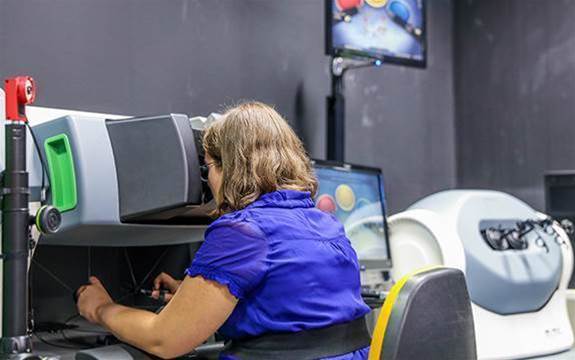Technology in healthcare often revolves around improving patient care or modernising administrative practices, but new research at Swinburne University will examine how robots could keep surgeons operating room-fit for longer.

The study is the first of its kind to examine how robot-aided surgery can reduce the stress on surgeons’ bodies from standing at odd angles and performing repetitive motions that can lead to career-ending strain injuries.
Researchers, led by roboticist Dr Mats Isaksson, will compare the biomechanics of a surgeon operating with a Da Vinci Skills Simulator to that of a traditional laparoscopic surgical procedure.
Mechanical engineering, interactive media, and biomechanics experts are also engaged on the project to track and analyse surgeons’ movements with motion capture technology. The Valley Private Hospital and medical solutions provider Devices Technologies are similarly collaborating on the project.
“We want to track everything so we can put the data into a model and calculate things like ergonomic strain to show the differences between traditional and robotic laparoscopic surgery,” Dr Isaksson said.
“This will allow the team to quantify the differences between robotic and traditional surgery, which has not been done before.
“We will be able to prove to what extent robotics are better for the surgeon.”
On top of reducing strain, the surgical robot is capable of greater dexterity and can be manoeuvred into difficult positions to perform intricate operations more easily, all while being fully-controlled by a skilled human operator.
Clinical lead and surgeon at The Valley Private Hospital, Dr Chris Hensman, added that the Da Vinci robot “allows the surgeon to sit comfortably and operate for longer and is also an excellent training tool that ensures surgeons are prepared to perform procedures.”
Isaksson said it was a great opportunity for the university and the hospital to explore and master the use of medical robotics as interest in the field continues to gather momentum.
“My area of interest is in how we can improve these robots to even better serve patients and surgeons alike. It would be great to get to a point where the robot provides sensory feedback when it touches certain areas, or for how much pressure is being applied.”
Hensman added that thirty percent of surgeons will end their career prematurely due to repetitive strain injuries, poor posture, and working at unnatural angles.



.png&h=140&w=231&c=1&s=0)

_(20).jpg&h=140&w=231&c=1&s=0)



_(26).jpg&w=100&c=1&s=0)

 iTnews Executive Retreat - Security Leaders Edition
iTnews Executive Retreat - Security Leaders Edition












_(1).jpg&h=140&w=231&c=1&s=0)



